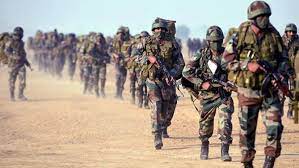NEW DELHI: After the military stand-off with China in April 2020 along the Line of Actual Control (LAC) and the subsequent clash at Galwan in eastern Ladakh in June 2020, a major air effort was launched.
Over 68,000 Army soldiers, around 90 tanks, nearly 330 BMP infantry combat vehicles, radar systems, artillery guns and other equipment were airlifted by the IAF after the Galwan clashes, sources said. This was part of the rapid deployment along the LAC. The other part is upgrading infrastructure. A crucial project for upgrading the IAF landing ground at Nyoma in eastern Ladakh has now kicked off. Nyoma is being converted into a full-fledged base with allied infrastructure.
In December last year, the Border Roads Organisation (BRO), invited bids for an upgrade at Nyoma costing Rs 214 crore. Nyoma, located close to the Indus, is some 180 south-east of Leh at 13,700 feet. It is a natural flat on the plateau of Ladakh and was being used by helicopters and special operations planes like C-130 J that can land on mud.
The BRO plans to complete the upgrade in two years. The site is spread over 1,235 acres, where a 2.7-km runway with allied military infrastructure will come up. The IAF has an operational base at Leh and full-fledged airstrips at Kargil and Thoise (base of Siachen), the one at Nyoma will be the fourth in Ladakh.
At the start of the stand-off, IAF deployed its Su-30 MKI and Jaguar jets for round-the-clock surveillance and intelligence gathering on the enemy build-up. Since then squadrons of Rafale and MiG-29 have also been deployed at Ladakh.
Several squadrons located in Punjab and Ambala are on alert as the Indian Army and the IAF have maintained a high degree of combat.
The IAF also quickly enhanced its air defence capabilities and combat readiness by installing various radars and bringing a range of surface-to-air guided weapons to frontline bases along the LAC in the region, they said.


